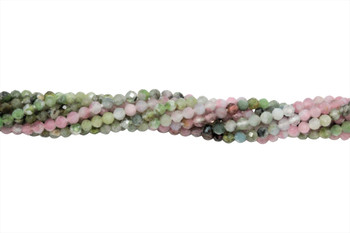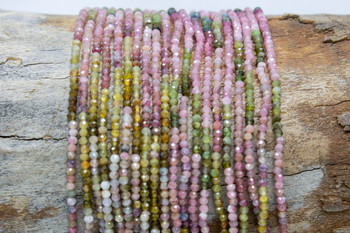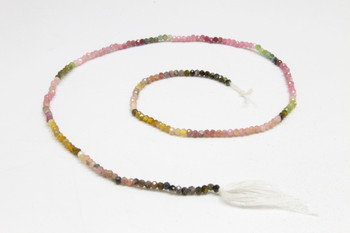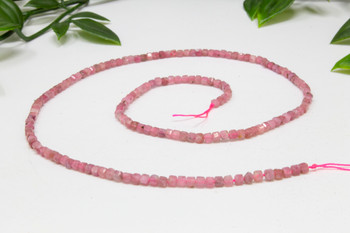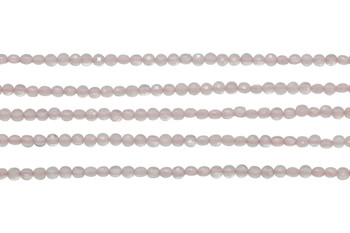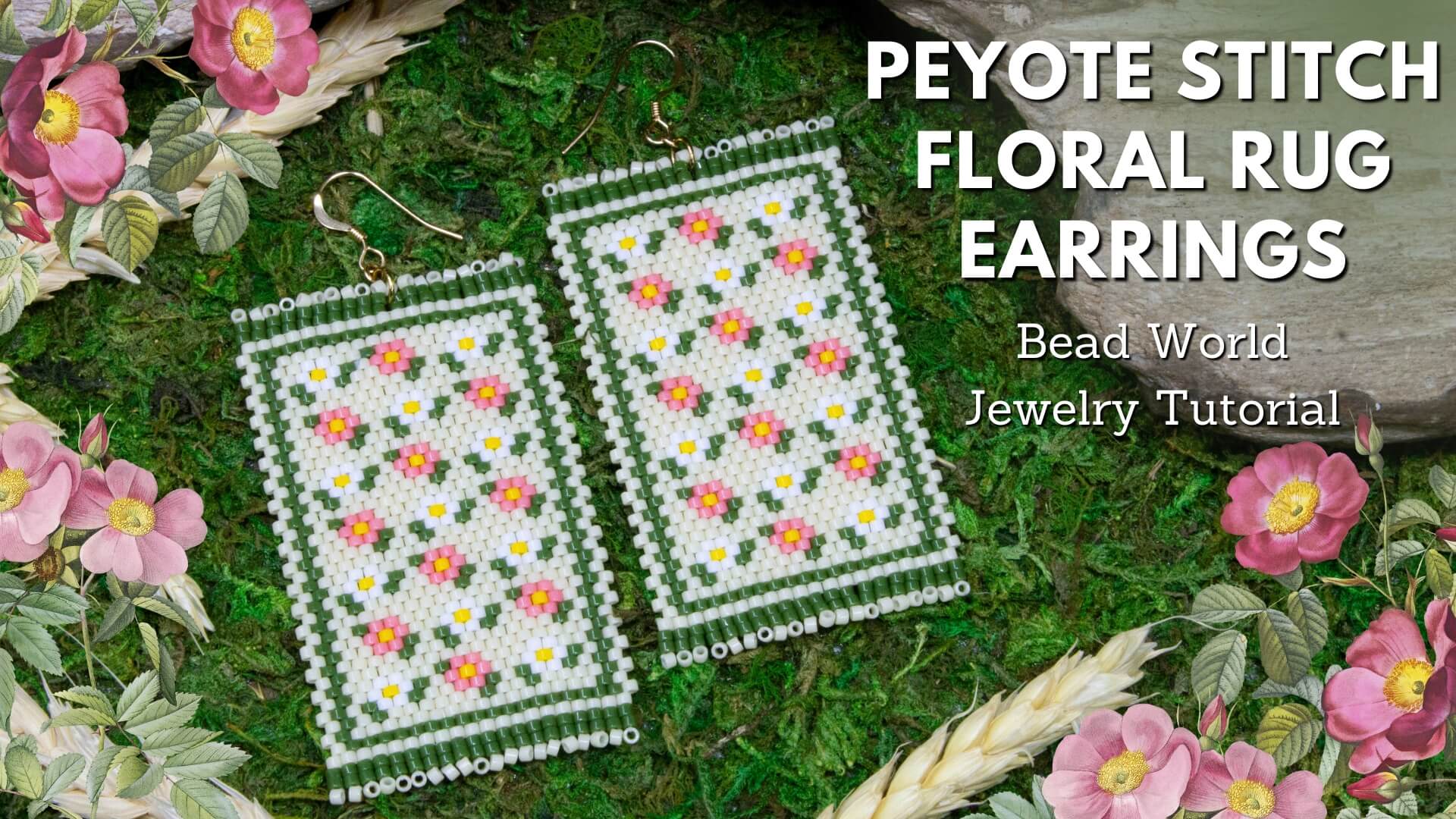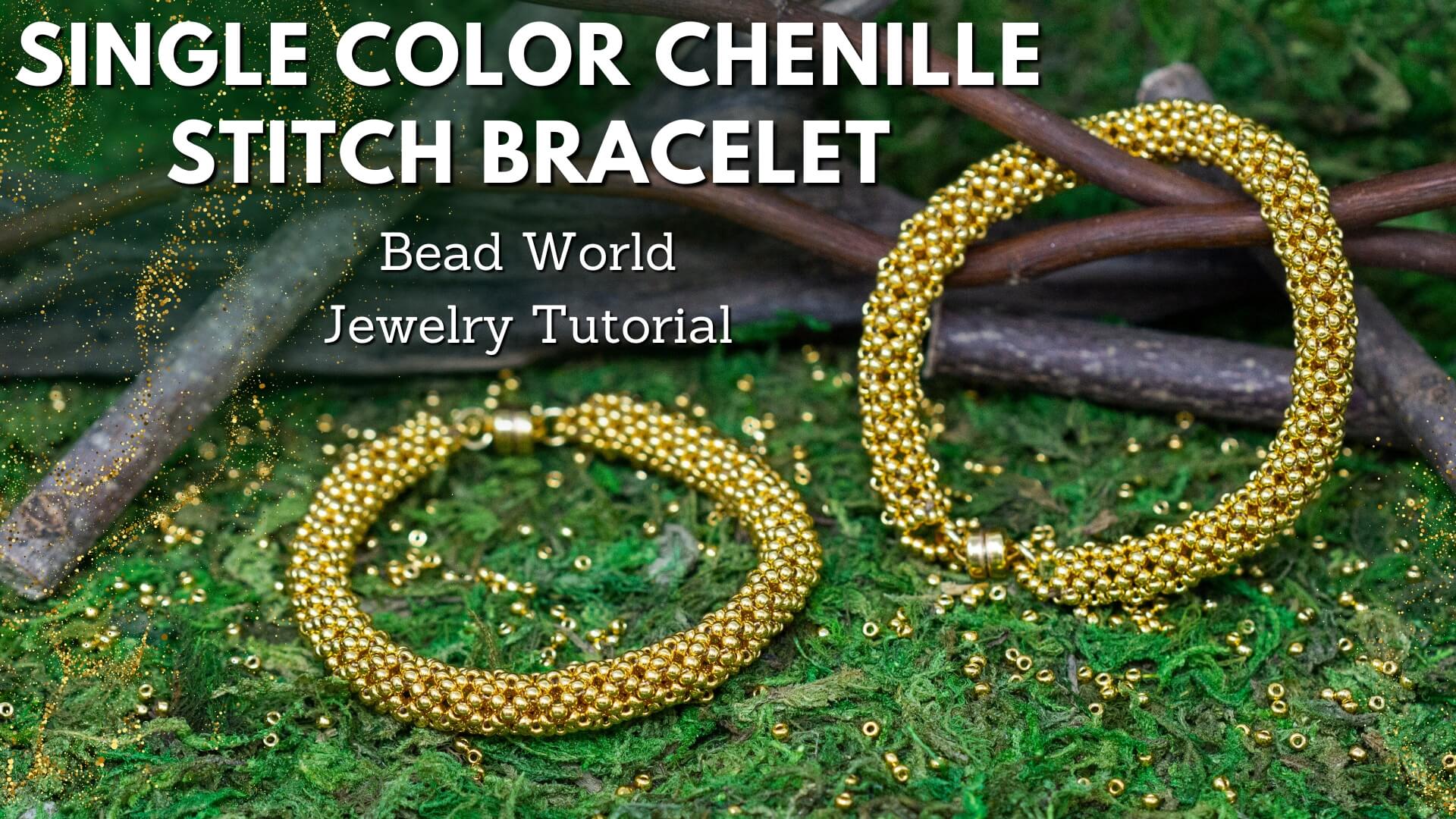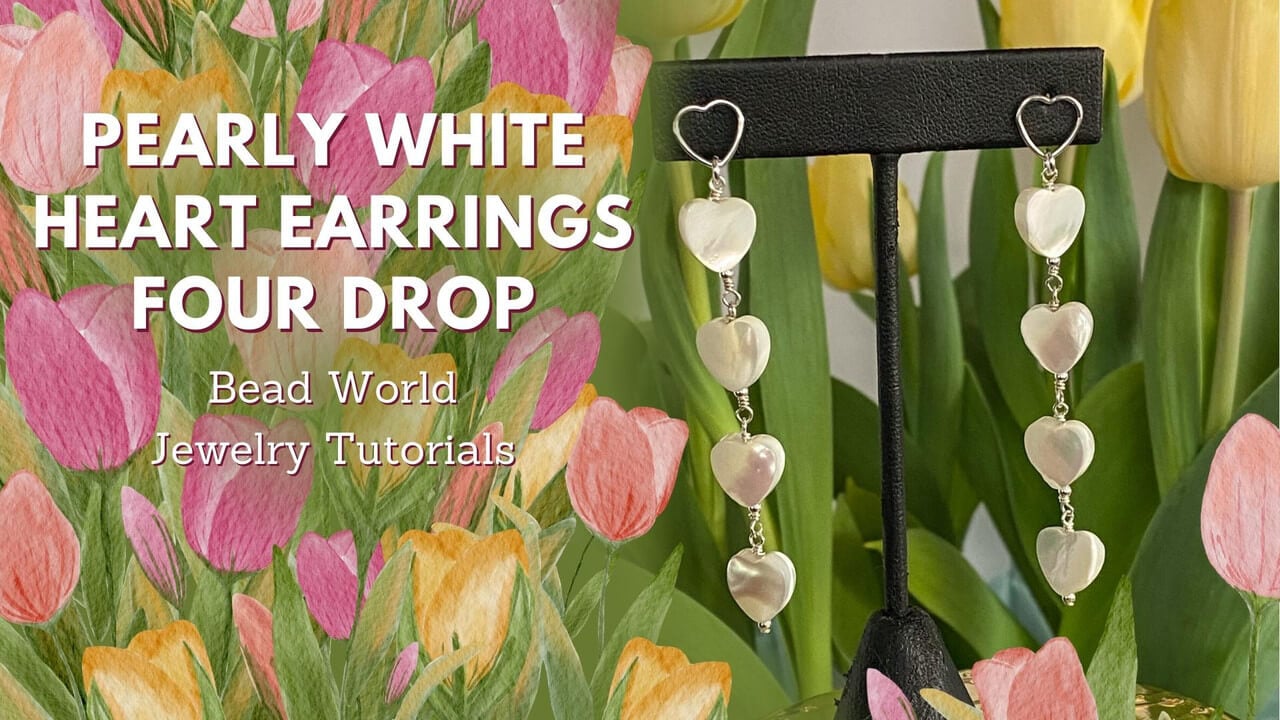Description
- Approximate beads per strand: 150
- What is it: Tourmaline is part of a large group of boron silicate minerals with a wide range of colors. It has a Mohs hardness of 7 to 7.5.
- History: In the 1500s, a Spanish conquistador of Brazil, washed the dirt from a green tourmaline crystal and confused the gemstone with an emerald. The confusion with emeralds and tourmaline continued until scientists recognized tourmaline as aits own mineral species in the 1800s. Its name comes from the word toramalli, which means “mixed gems” in Sinhalese (a language of Sri Lanka).
- Metaphysical Properties: Tourmaline is believed to promote inspiration,happiness, and self-confidence among those who wear it. It's also used to balance opposite energies, as it's considered to be a spiritual bridge.
- What is it: Quartz is a common variety of silicon dioxide that often crystallizes into well-formed hexagonal prisms. It occurs in many colors, including purple amethyst, yellow citrine, and smokey quartz. Rose quartz is a very soft, cloudy pale pink color.
- History: Rose quartz has been dated back to 7000 BC have been found in the area once known as Mesopotamia (today’s Iraq). Rose quartz jewelry was known to be crafted by the Assyrians around 800-600 BC. The Assyrians, along with the Romans, might have been the first to use this stone.
- Metaphysical Properties: Rose Quartz is believed to have a soothing energy which fosters empathy, reconciliation, and forgiveness of others. Said to clear anger, jealousy, resentment, and allows healing of issues associated with holding on to such negative emotions
- Because gemstones are natural materials, appearances may vary from bead to bead
Additional Information
Dimensions: |
2mm |
Shape: |
Faceted Rondel |
Color: |
Pink |
Approx. Strand Length: |
13 inches |
Sold: |
By the strand |
Material: |
Tourmaline |
Finish: |
Polished |
Hole Size: |
.5mm |
Range: |
2-2.9mm |
Material: |
Rose Quartz |







